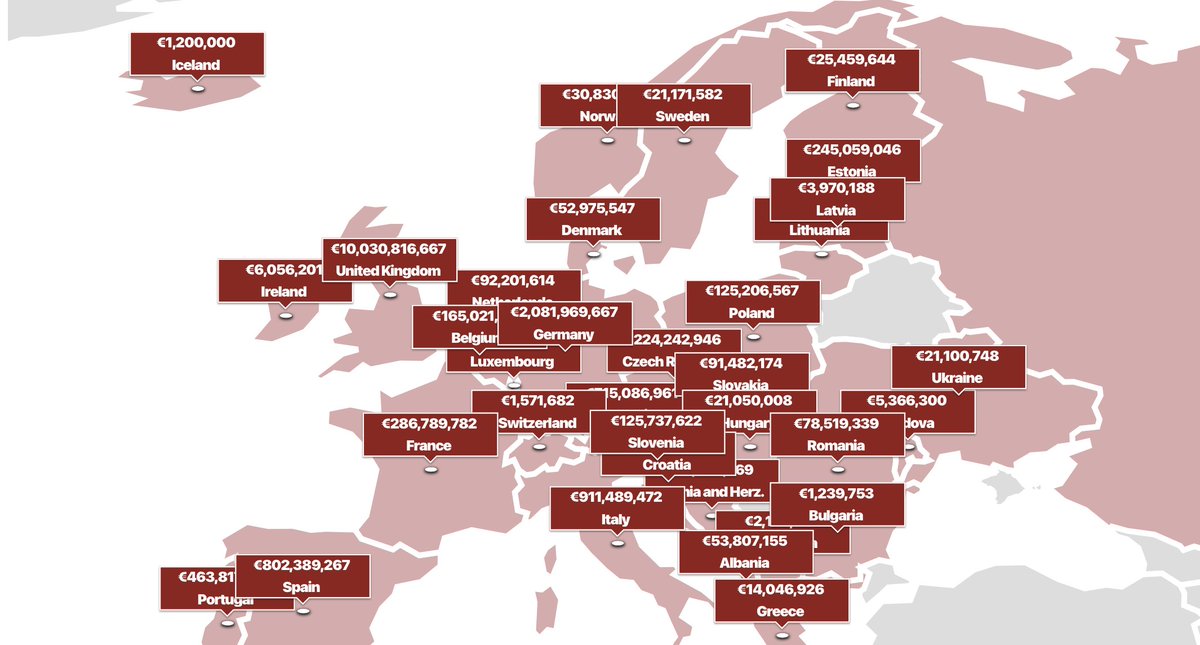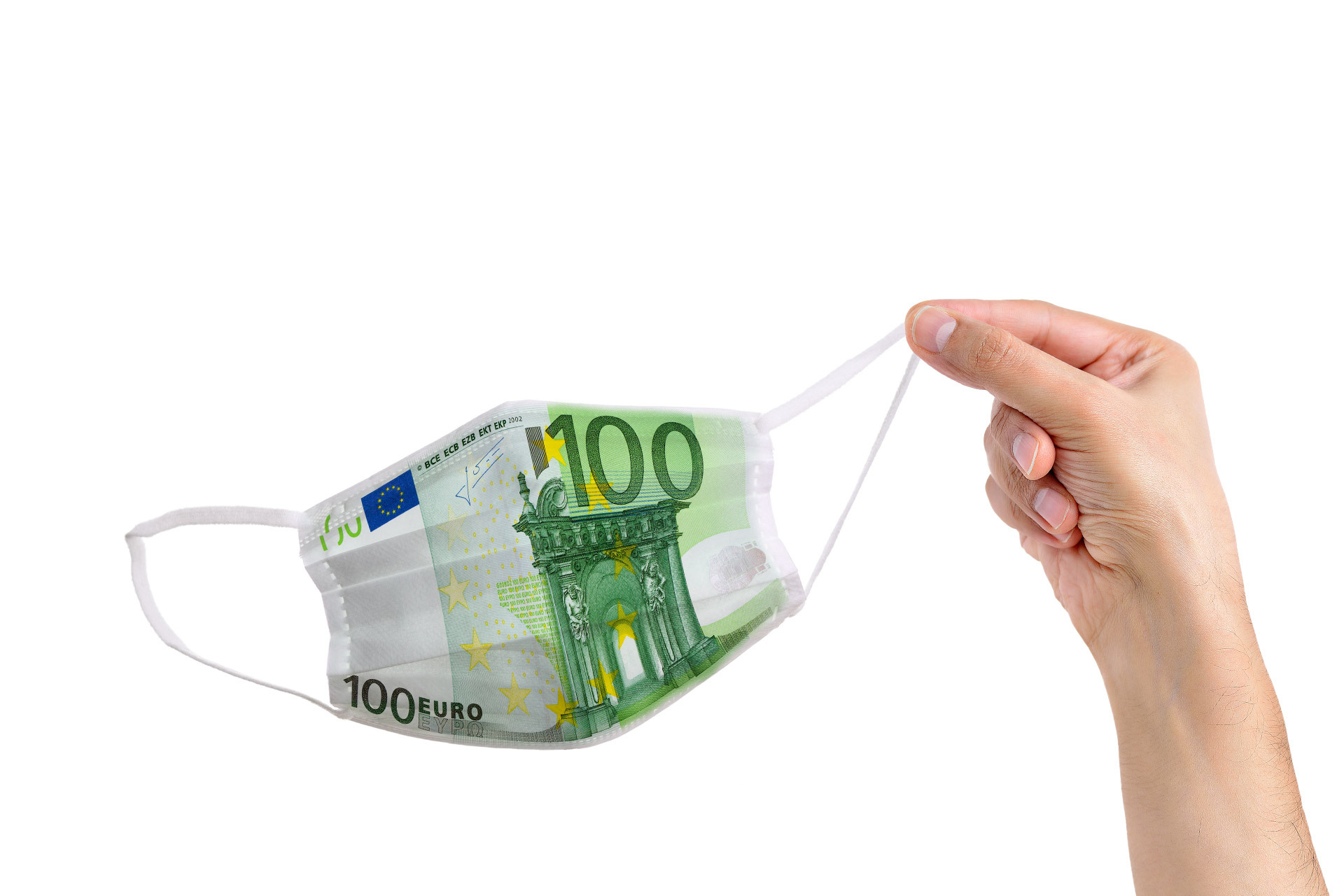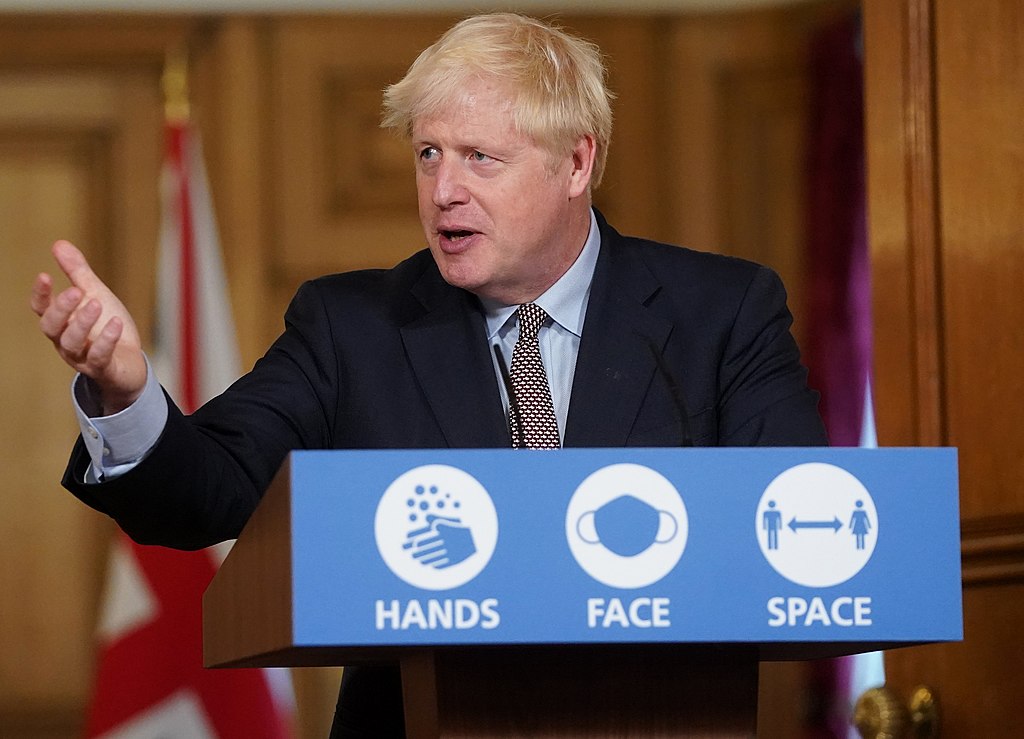
Before Johnson gives his evidence we should consider a few things:
1. Just how bad was the UK pandemic response?
2. How much could Johnson have affected this?
3. What was Johnson’s intent?
4. Was there any overt maleficence?
1. How did the UK perform?
Badly. For many in the wider public, it will be quite obvious that the UK did very badly indeed. But for those who are still able to deny what they see, let’s poke this a bit
There are a few considerations when examining how well a country did during the pandemic:
Firstly, there is how well a country was expected to do – its underlying capability.
Second, the direct outcomes – number of cases, Covid deaths, indirect deaths, etc…
Thirdly, the cost of achieving those outcomes – days in lockdown, loss of livelihoods, education, mental health, economic impact, cost of interventions – tests, PPE, furlough, etc..
Overall, did we live up to expectations and did the results justify the costs?
We know from the testimony of Hancock, Harries, etc.. that the UK was expected to do very well. The Global Health Security Index rated the UK at number 2 in 2019. In a large part, this relates to the NHS infrastructure and public health expertise in the UK.
And this is probably fair in that if the pandemic had hit in 2007 when the influenza plan was first designed we probably would have done quite well. This was before public health funding was decimated and Brexit had not derailed pandemic preparedness work.
This was covered in Module 1 – austerity, failure to grow the NHS, massive cuts to public health funding, a failure to update pandemic plans, no social care preparation, and all depts being consumed with “what ifs” due to Brexit materially hampered our pandemic response.
So what was our capability?
In 2009, it was really quite good (still too few doctors, nurses and beds). By 2020 our capability was still OK, but it seems inconceivable that we would have ever made it into an excellent response based on the state of public services at that time.
We must also appreciate that there are degrees of good and bad responses. For example, we could look at Japan, Taiwan, South Korea or New Zealand – very few deaths with relatively limited restrictions to life or the economy. This would be deemed an excellent response.
Then there are the countries that achieved a good response – Norway, Singapore, Iceland, Australia, … – where death and economic harm were certainly minimised.
Others achieved an average response – France, Germany, Canada, – where both the virus and the measures needed to control them had substantial adverse effects throughout the country and for a prolonged period, but lives lost were somewhat minimised.
Then there are the countries that had a relatively poor response. These are countries where deaths soared despite extensive social restrictions. That is, despite huge social disruption the death rate was very high – Belgium, Italy and Spain are probably in this group.
The final group are the catastrophic pandemic responses. This is where substantial costs (financial and social) did not lead to a significant reduction in death and disability. The U.S. and Brazil are likely to feature here.
But where does the UK fit?
Here we will use Our World in Data which is run by Johns Hopkins University. It isn’t perfect but is pretty good.
There is some debate about the data but it is unlikely to change the broad picture.
Deaths
The UK is number 1 in terms of Covid deaths of the countries chosen. There is debate about categorising deaths but even the most generous interpretation would still see the UK remaining at the top of this chart.
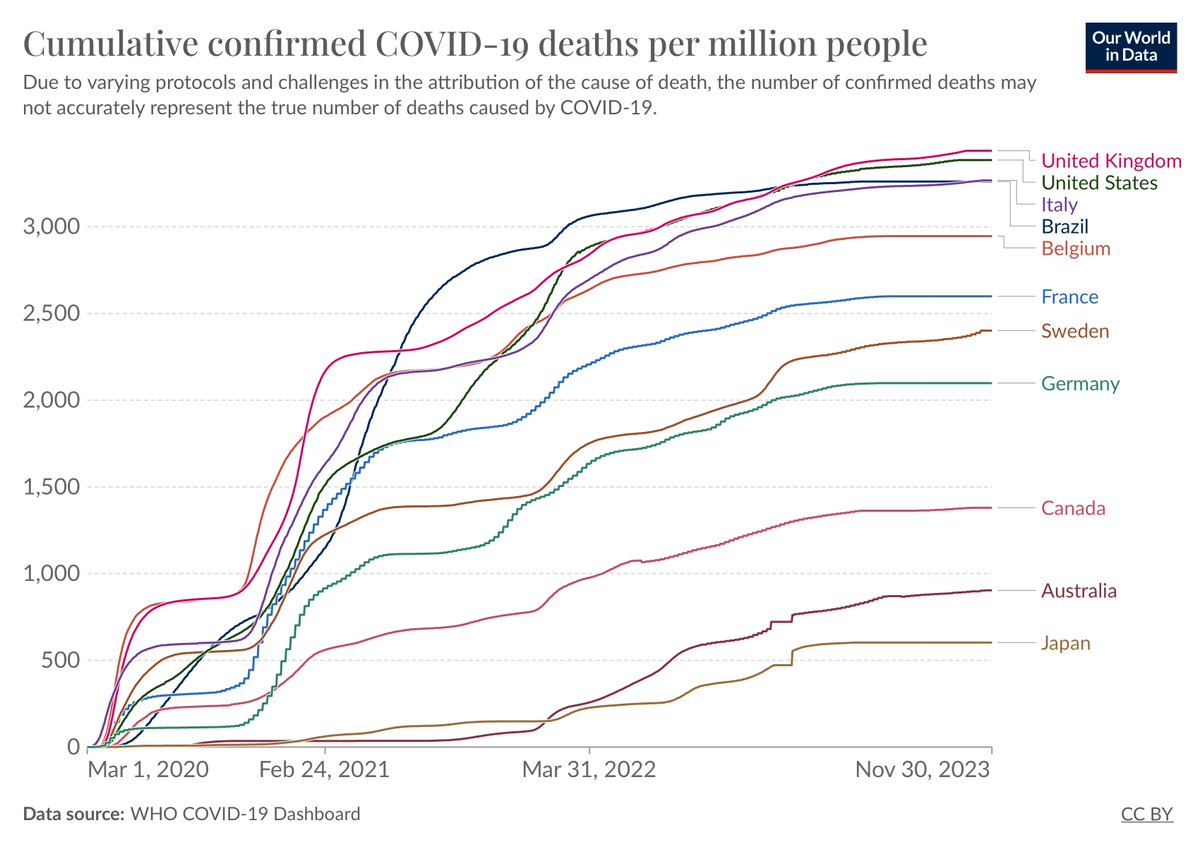
In terms of overall deaths (direct and indirect), the UK is up there with Brazil, the US, and Italy.
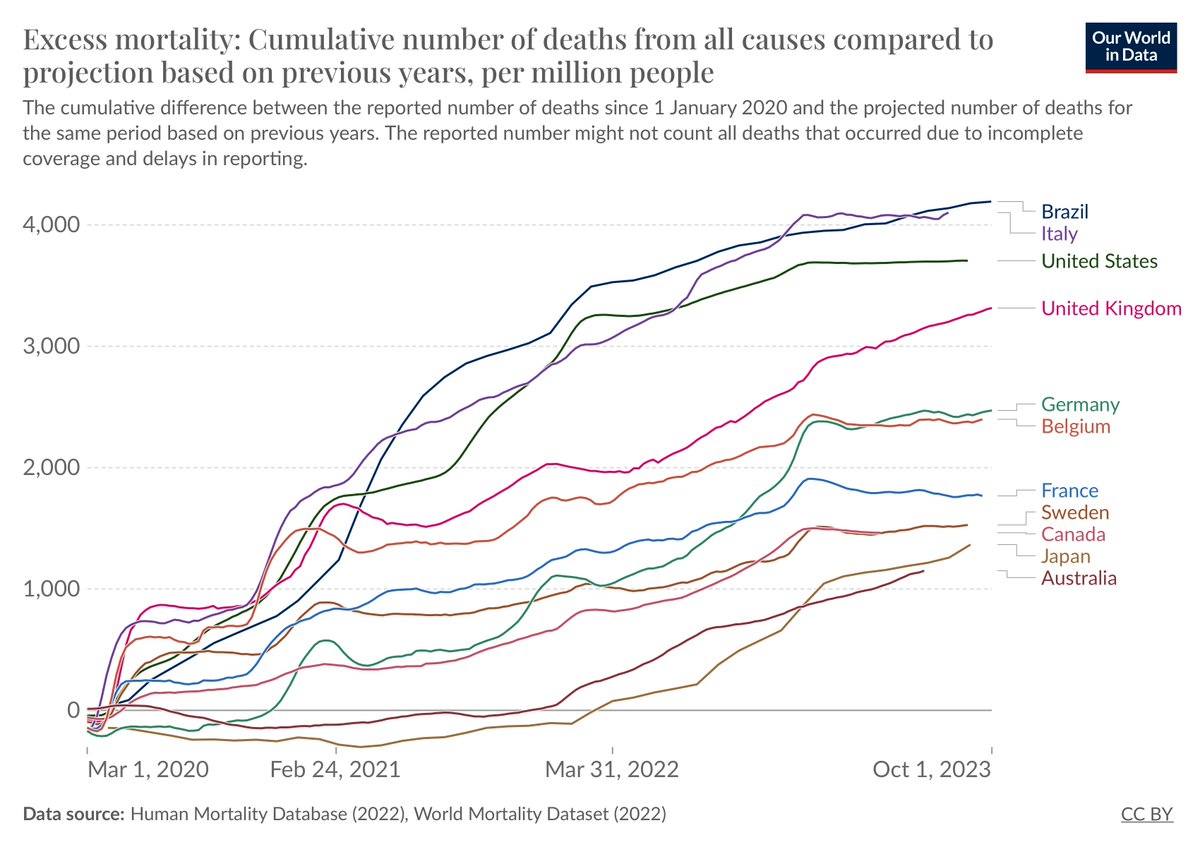
To then understand how “good” a response this is we must look at what was needed to achieve these numbers – lockdowns, tests, costs, economic impact. How much effort did we put in or sacrifices did we make to achieve this response?
In terms of national lockdowns, the UK was again right up at the top of the chart. Some countries are difficult to compare, particularly the large ones – US, Canada, Russia, China and Australia. Most of these had significant local lockdowns.
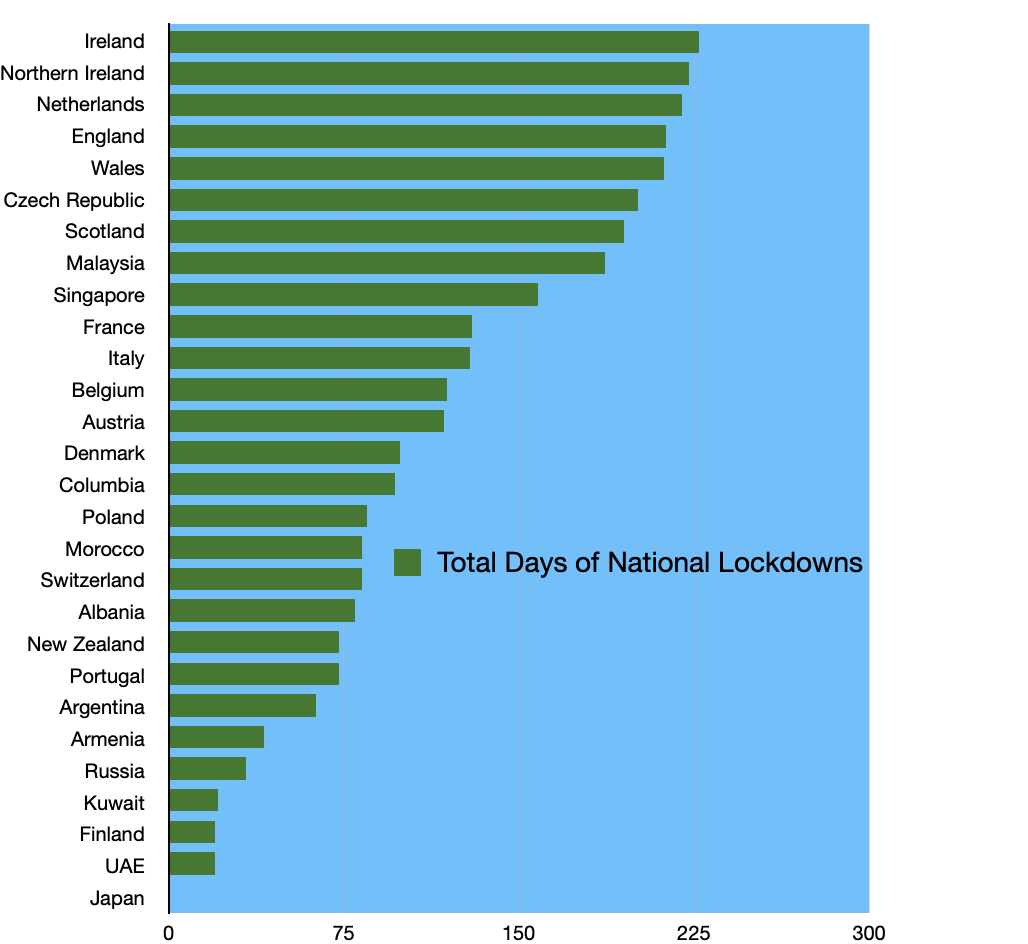
For comparison, look at France which had 140 days in lockdown whereas the UK had around 220 days. Japan – similar in some ways – had no lockdowns at all. New Zealand only had 70 days. So despite much more time in lockdown than in France, we had double the deaths!
Next, look at how much the UK spent on testing…Our testing capacity was delayed – indeed community testing was stopped entirely on 12th March. But when it came back online (with private contractors) we tested much more than comparative nations.
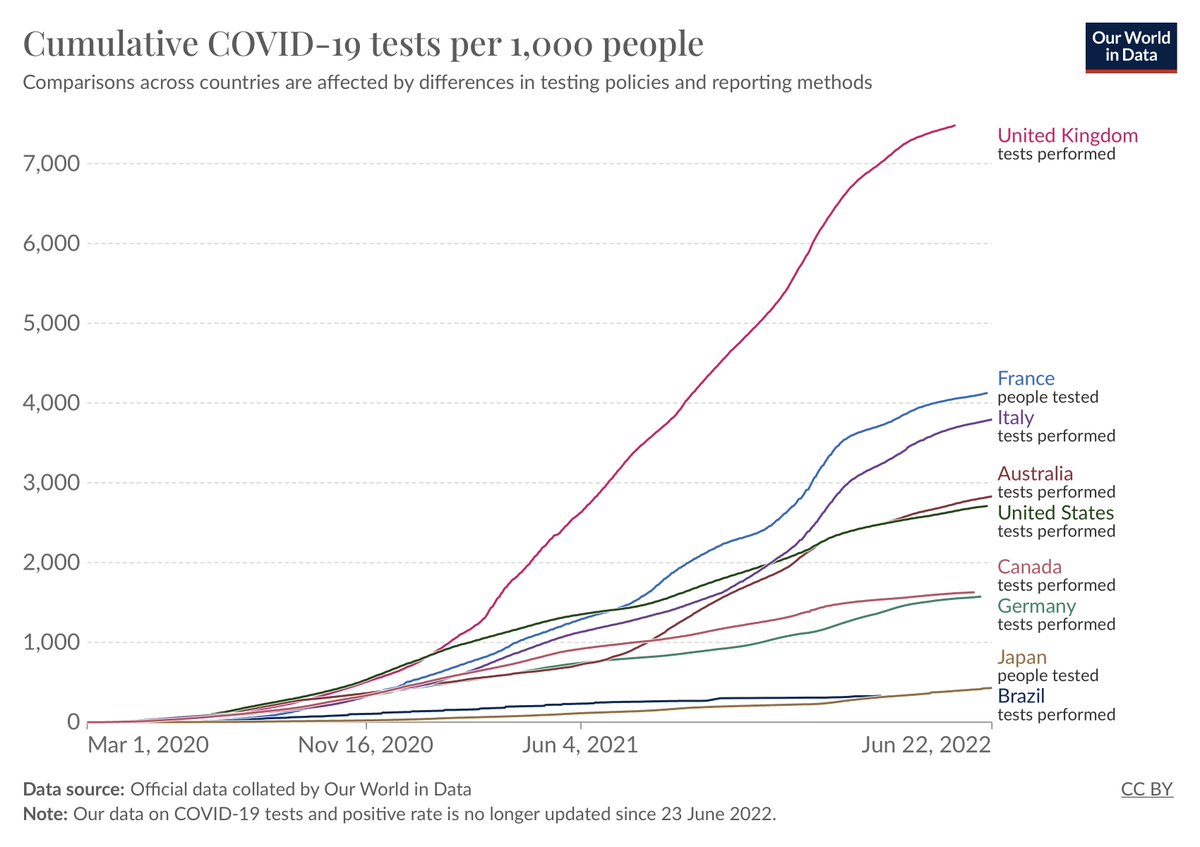
It’s a legitimate question: why did we test so much and yet achieve so little? Double the number of tests than France, yet double the deaths too!
The same goes for PPE. Again, we were delayed in getting PPE to frontline staff but we ended up spending an incredible amount on it.
The data here is not as clear cut – contracts aren’t always in the public domain. But there are some useful comparisons. Here is a map of PPE expenditure in Europe. Apparently, at this point the EU had spent 20bn Euros, and of that, the UK spent 10bn Euros.
Europe’s COVID-19 Spending Spree Unmasked – OCCRPOCCRP and media partners from across Europe collected over 20 billion euros’ worth of COVID-19 contracts and tenders. Explore our data interactive to learn more about what we found, from pricey mas…https://www.occrp.org/en/coronavirus/europes-covid-19-spending-spree-unmasked
Indeed, we burnt more of our first year’s supply of PPE (£4bn) than all the hospitals in the US used over two years of the pandemic (US$3bn). Eye-watering levels of expenditure…but for what gain?
The government spent a lot of money, but did it spend it on the right things? According to the IMF, by July 2021, France had spent around £30bn on health (including tests, PPE, T&T) and Germany around £60bn. At the same time, the UK had spent £156bn on health!
But, oddly, we spent less supporting people during Covid. Germany spent around £400bn versus the UK’s £180bn. France spent about the same as the UK (but of course France spent £120bn less on health).
All this spending on health interventions with very little to show. Remember, we didn’t see an increase in the size of the NHS…indeed, it shrank during the pandemic. Bed capacity fell 8 per cent. So what was this money actually for?
It wasn’t to protect the economy. We did far worse than other G7 countries. Here is an FT graph showing indexed Real GDP through the last 3 years. The grey lines are the other G7 countries.
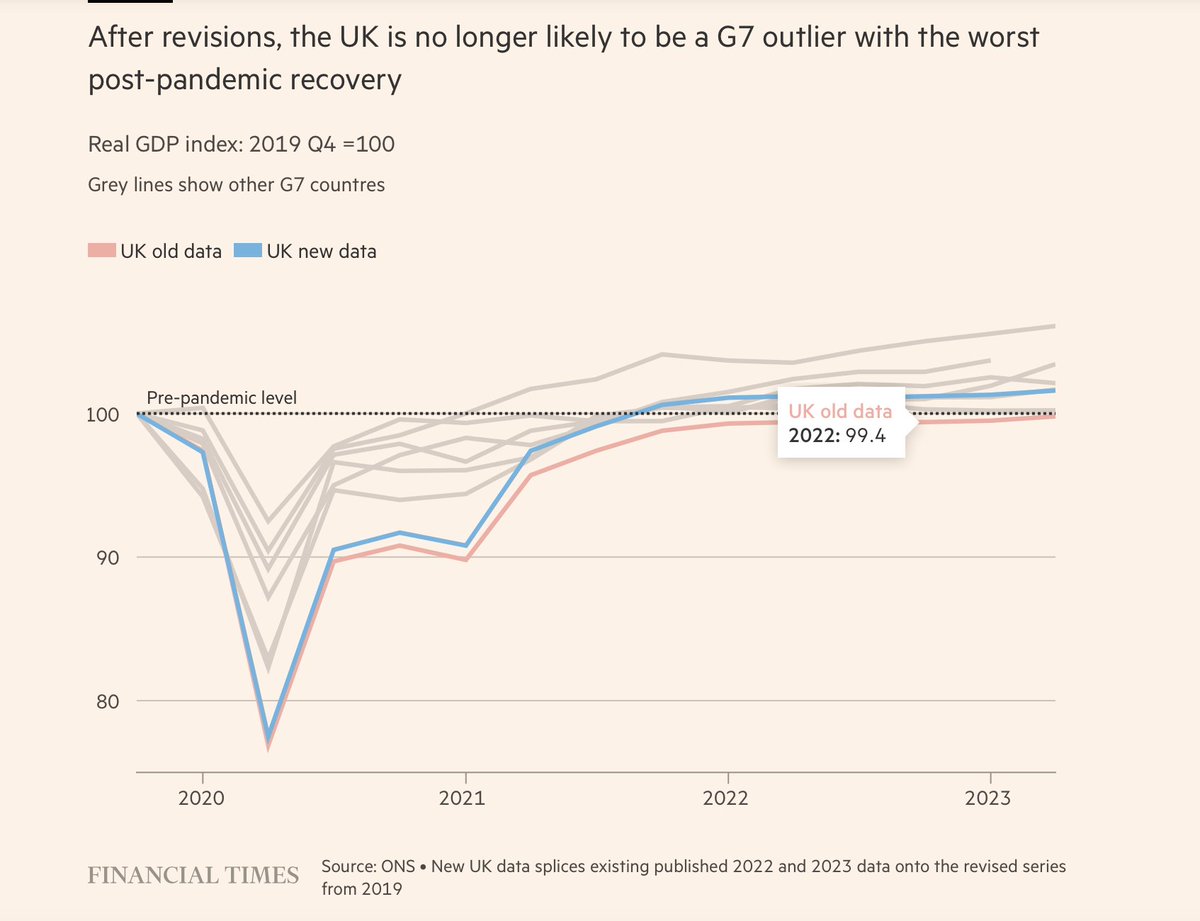
In terms of expenditure, we spent a lot on tests, test & trace, and PPE, but very little on actual healthcare provision and only a modest amount on supporting people during the pandemic. Odd, for a govt not containing a virus to spend so much on such things.
To sum up costs, we spent a colossal amount on tests, test and trace, PPE, and yet we had the highest number of Covid deaths, the longest lockdowns, and the poorest economic performance. All from a country that should have had one of the best responses in the world.
I think it is fair to say that the UK ended up in the catastrophic pandemic response category. Indeed, the UK has a reasonable shout at having the “worst pandemic response”. The States did very badly but did protect their economy to some degree. Arguably, Brazil was worse.
2. Could Johnson have affected this?
Undoubtedly the answer is yes! The initial delay was really quite something. And certainly, by the 14th March that decision rested solely with Johnson. Watch how late the UK is in the FT graphic
3. And what was his intent?
While Johnson is likely to paint a picture of scientific uncertainty and wrestling with tough decisions, there is evidence that Johnson formed a position very early on and never wavered from it.
I return to this remarkable speech given by him in Greenwich on the 3 Feb. It is truly extraordinary in that he hadn’t even been briefed by his scientists yet. Indeed, there was still uncertainty about whether it would be a sustained global pandemic.
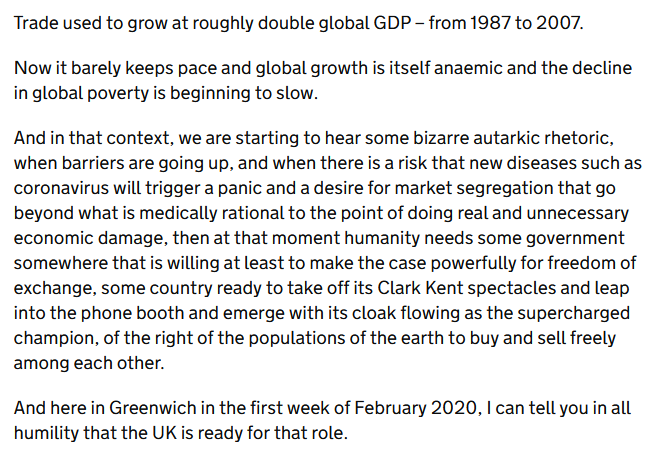
Yet, Johnson clearly seems to know that it will be a monumental pandemic and that there will be a need to restrict people’s activities and the economy. He clearly states the UK will be different and keep the economy open.
This formed the basis of what became known as the natural herd immunity strategy. Sadly some advisers got onboard with it. But had Johnson’s position been ‘let’s get on top of this and save as many lives as possible’ there is no doubt his advisers would have backed him.
And there is no evidence this changed throughout the pandemic. At each critical juncture, Johnson delayed. Had lessons been learned he would have realised we need to act hard and fast to limit both death and the length of lockdowns. He did the opposite.
I think Johnson would find it hard to argue against the allegation that he wanted the infection to spread as quickly as possible, probably so the UK could emerge from the pandemic sooner. Certainly from mid-March this was against all official advice!
So then, to the final question. 4. Was there actual maleficence? That is, was there an intent that went beyond saving lives or even saving the economy? Some have suggested that the death of the older and more vulnerable groups suited Johnson’s ideology…
Others have suggested that this was disaster capitalism. That there was no financial benefit (individual financial benefit) in suppressing or containing the virus, and in fact, billions were made in profits by Johnson’s allies from the poorly controlled pandemic.
The reality, it is unlikely the Inquiry will probe such intentions. It may reveal the evidence from which we can discern his intentions throughout the pandemic, but it seems unlikely to achieve an admission that Johnson was pursuing a herd immunity strategy throughout.
To summarise, we were expected to do well, we spent a lot of money, and we had one of the longest lockdowns in the world, yet we still had one of the highest Covid-19 death tallies and excess death tolls.
Johnson set his position of mass infection early and the Cabinet and many of his advisers fell behind this. Undoubtedly, had Johnson decided to focus on saving lives then we would have done far, far better.
It is not entirely on Johnson. As Module 1 demarcated clearly, austerity and Brexit had a significant impact on our resilience and almost certainly would have prevented an excellent response. Johnson did have the resources to achieve a good response. He failed.

